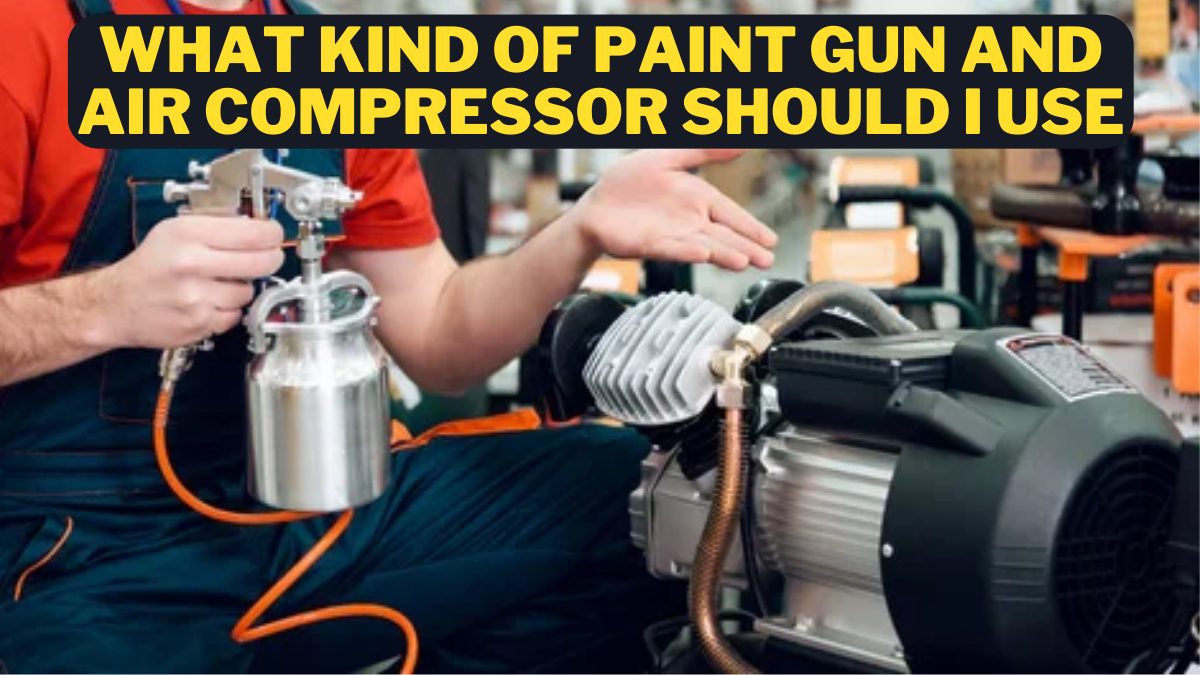When it comes to painting projects, choosing the right paint gun and air compressor is essential for achieving professional-quality results. With a plethora of options available on the market, it can be overwhelming to determine the ideal combination of paint gun and air compressor for your specific needs.
In this comprehensive guide, we will walk you through the key factors to consider when selecting a paint gun and air compressor, ensuring that you make an informed decision that aligns with your painting requirements.
From understanding different types of paint guns to evaluating air compressor specifications, this article will provide you with the knowledge required to choose the best combination for your painting projects.
Types of Paint Guns
Before delving into the details, it’s important to familiarize yourself with the different types of paint guns available.
The three primary types are conventional spray guns, HVLP (High Volume Low Pressure) spray guns, and airless paint sprayers.
- Conventional Spray Guns: Conventional spray guns are commonly used in automotive and industrial applications. They utilize compressed air to atomize the paint and produce a fine finish. Conventional spray guns require higher air pressure and can consume more paint compared to HVLP guns.
- HVLP Spray Guns: HVLP spray guns are designed to minimize overspray and maximize paint transfer efficiency. They operate at lower air pressure, making them ideal for painting furniture, cabinets, and other smaller projects. HVLP guns deliver a high volume of air with low pressure, resulting in reduced paint wastage.
- Airless Paint Sprayers: Airless paint sprayers use a hydraulic pump to generate high pressure, forcing the paint through a small opening in the spray gun’s nozzle. This type of paint gun is best suited for large-scale projects such as painting walls, fences, and exteriors. Airless sprayers offer faster application times but can produce more overspray than HVLP guns.
Important Factors for Paint Gun Selection
When selecting a paint gun, several key factors should be taken into consideration. Here are some essential factors to consider:
- Project Type and Size: Consider the scale and nature of your painting project. For smaller, detailed work, HVLP guns are often the best choice due to their precision and low overspray. For larger projects, such as painting walls or exteriors, airless paint sprayers can provide faster coverage.
- Paint Compatibility: Different paint guns are compatible with specific types of paint. Ensure that the paint gun you choose is suitable for the paint material you will be using, whether it’s water-based, oil-based, latex, or enamel.
- Skill Level: Consider your level of experience and comfort with paint guns. HVLP guns are generally more forgiving and easier to control, making them suitable for beginners. Conventional spray guns and airless sprayers require more skill and experience to achieve optimal results.
- Desired Finish: Determine the finish quality you desire. Conventional spray guns can produce a smooth, glossy finish, making them popular in automotive refinishing. HVLP guns are known for their fine, even coverage and are often preferred for furniture and cabinets. Airless sprayers can provide a faster, textured finish suitable for larger surfaces.
Air Compressor Considerations
Choosing the right air compressor to accompany your paint gun is crucial for optimal performance. Here are the key factors to consider when selecting an air compressor:
- CFM (Cubic Feet per Minute): CFM indicates the airflow capacity of the compressor and directly impacts the performance of the paint gun. Different paint guns require different CFM ratings to operate effectively. Check the manufacturer’s specifications for the recommended CFM for your chosen paint gun and ensure that the air compressor can deliver the required airflow.
- Tank Size: The tank size determines the amount of compressed air that can be stored for immediate use. A larger tank provides a steady supply of air and reduces the frequency of the compressor cycling on and off. Consider the duration of your painting tasks and select an air compressor with an appropriate tank size to avoid interruptions.
- PSI (Pounds per Square Inch): PSI indicates the maximum pressure the air compressor can generate. Most paint guns require a specific PSI range for optimal performance. Check the paint gun manufacturer’s recommendations and ensure that the air compressor can deliver the required pressure.
- Portability and Noise Level: Consider the portability of the air compressor, especially if you need to move it around frequently. Look for features such as handles, wheels, or a compact design for easy transportation. Additionally, if you’re working in a noise-sensitive environment, select an air compressor with a lower decibel rating for reduced noise levels.
Conclusion
Selecting the right paint gun and air compressor is crucial for achieving professional-quality results in your painting projects. By understanding the different types of paint guns available and evaluating key factors such as project type, paint compatibility, desired finish, CFM, tank size, PSI, portability, and noise level, you can make an informed decision that suits your specific needs.
Remember to consider the scale of your projects, your skill level, and the desired outcome when choosing the paint gun. Additionally, ensure that the air compressor’s CFM, tank size, PSI, portability, and noise level align with the requirements of your paint gun.
With this comprehensive guide, you are now equipped with the knowledge to confidently select the best paint gun and air compressor combination for your painting endeavors.
